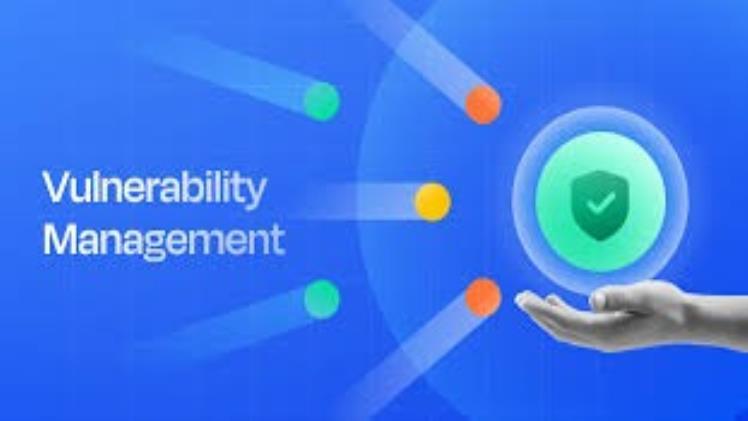How to Optimize Your Vulnerability Management Tool for Better Results

While 72% of leaders say their organization uses a vulnerability management tool for managing risk exposure according to a Gartner study, other data points to 3,205 malware attacks affecting 353 million people in the US alone, in 2023. Where’s the gap?
The fact is that any security tool is going to be only as good as the security practices that guide its utilization. Your vulnerability management tool’s performance is impacted by the allied practices that precede and follow vulnerability scans.
In this guide, we’ll dive into several strategies to help you optimize vulnerability management tools. From improving configuration to automating tasks, these tips will enable you to get better results and enhance your overall security posture.
7 Tips for Optimizing Your Vulnerability Management Tool
1. Configure Vulnerability Management Tools Effectively
The first step to ensuring your vulnerability management tool operates at peak efficiency is through careful configuration. Rather than using default settings, tailor the tool to address your organization’s unique security requirements. This approach ensures the software zeroes in on the right areas, identifying the vulnerabilities that matter most to your environment.
Include your cloud infrastructure and remote assets in your organization’s operating environment. Don’t forget about assets that might be offsite because owners are traveling or on leave. Be sure to scan internal and customer-facing apps in use, and in development.
Comprehensive coverage is one of the core aspects of enhancing vulnerability management tool performance.
2. Regularly Update and Patch Your Systems
One of the most important best practices for vulnerability management optimization is keeping your software and systems up to date. This means regularly applying patches and updates to your s networks, applications, and devices, based on vulnerabilities uncovered by your vulnerability management tool.
Failing to act on vulnerabilities uncovered, or delaying remediation, completely defeats the purpose of having a vulnerability management tool.
3. Leverage Your Vulnerability Management Tool’s Automations
Utilizing in-build automations is a game-changer when it comes to optimizing vulnerability management tools. Most modern tools come with built-in automation features, allowing you to automate routine tasks such as scanning and report generation. Automation reduces the manual effort required from your team, giving them more time to focus on higher-priority tasks like analysis and mitigation.
By automating processes, you not only save time but also reduce the chance of human error. This leads to a more streamlined and reliable workflow, which is critical to maximizing results with vulnerability management software. It also means that your vulnerability management operations are more scalable, as your tool can handle a larger workload with minimal additional input from your team.
4. Prioritize High-Impact Vulnerabilities
Not all vulnerabilities are created equal. And vulnerability scans uncover more vulnerabilities than you team can realistically remediate immediate. That’s why improving results with vulnerability management tools often boils down to prioritizing vulnerabilities based on their potential impact. Supplementing vulnerability scanning with pentesting will allow you to categorize and rank vulnerabilities by their severity (or potential for exploitation), helping your team focus on those that pose the greatest risk.
By addressing high-risk vulnerabilities first, you ensure that your organization is safeguarded against the most pressing threats. This reduces the likelihood of a severe security incident, which is the very definition of improving results from your vulnerability management tool.
Pro tip: Consider investing in Penetration Testing As A Service (PTaaS). With PTaaS, you continuously supplement your vulnerability scans with pentesting, effectively prioritizing vulnerabilities throughout, rather than point-in-time. PTaaS achieves more robust protection with automated and human pentesting, and year-round control checks, versus the point-in-time assessments (that often comprise hard-to-validate findings that pentesting consultants often leave you with).
5. Enhance Collaboration Between Security and IT Teams
Vulnerability management is not just the responsibility of your security team—it’s a cross-functional effort that involves IT and other departments. A major factor in effective use of vulnerability management tools is ensuring seamless collaboration between these teams. When security and IT teams work together, they can share insights and align their goals, improving the overall efficiency of the tool.
For example, IT teams may have insights into system configurations and network structures that can help security teams refine their scanning processes. Similarly, security teams can alert IT teams to urgent vulnerabilities that need to be addressed immediately. This collaborative approach enhances the effectiveness of your tools and accelerates response times.
A PTaaS platform like Siemba can help you achieve team alignment by onboarding all stakeholders onto the same platform, enabling visibility and also allowing security teams to allocate and track remediation tasks.
6. Plan Scans Strategically
Scheduling vulnerability scans correctly is another key to optimizing vulnerability management tools. Regular and consistent scans help ensure that new vulnerabilities are caught as soon as they emerge, minimizing your risk exposure. Rather than performing scans randomly, schedule them to coincide with system maintenance, updates, or after major changes to the network.
Optimizing your scan schedule also involves balancing frequency with system performance. While frequent scans can catch vulnerabilities faster, they can also put a strain on system resources. Finding the right balance between scan frequency and performance ensures that your tool provides timely insights without disrupting daily operations.
Pro tip: While you might be trying to minimize inconvenience by planning scans after-hours, this is not ideal. You need all systems up and running for your vulnerability management tool to give you a true picture.
7. Continually Review and Refine Your Strategy
Finally, one of the most important things you can do to maximize results with vulnerability management software is regularly reviewing and refining your strategy. Cybersecurity is an ever-changing field, and new threats emerge constantly. Your vulnerability management approach should evolve with these changes.
Conduct periodic audits of your tool’s performance, checking for any gaps in coverage or areas where optimization can be improved. By staying proactive and adapting to new challenges, you ensure that your vulnerability management tool remains an effective part of your security strategy.
Bonus tip: Choose the right tool
No amount of optimization moves can overcome hurdles like poor support or lack of responsiveness from your service provider or platform tool. Always work with vulnerability management service providers that prioritize your need for answers and clarity.
Conclusion
Optimizing your vulnerability management tool is essential for achieving better results and strengthening your organization’s security. From configuring vulnerability management tools effectively to automating processes and fostering collaboration, there are numerous ways to improve results with vulnerability management tools.
By following the tips for optimizing your vulnerability management tool outlined above—regular updates, prioritizing high-risk vulnerabilities with pentesting, strategic scan scheduling, and regular review—you can ensure peak performance.
Remember, vulnerability management is not a one-time effort, but an ongoing process that requires constant attention. Your vulnerability management tool should support this idea. By investing in a combination of vulnerability scanning and pentesting through PTaaS, you can prioritize vulnerabilities correctly, and patch gaps in a timely fashion, leaving no entry points for threat actors.
FAQs
What is vulnerability management optimization?
It’s the process of enhancing the performance of vulnerability management tools through configuration, automation, and best practices to improve results.
Why is configuration important for vulnerability management tools?
Proper configuration ensures the tool ensures complete coverage of all your network assets, and addresses your organization’s specific security needs. This improves its effectiveness in identifying relevant vulnerabilities.
How can automation improve vulnerability management?
Automation reduces manual tasks, streamlines workflows, and allows your team to focus on critical vulnerabilities, improving tool performance and scalability.
Why should vulnerabilities be prioritized? How can I achieve effective prioritization?
Prioritizing high-risk vulnerabilities ensures that the most severe threats are addressed first, reducing the likelihood of critical security incidents. Pentesting can help you prioritize vulnerabilities effectively.
How often should vulnerability scans be conducted?
Scans should be conducted at least monthly and after major system updates or network changes. This ensures vulnerabilities are detected promptly while balancing performance and operational needs.




